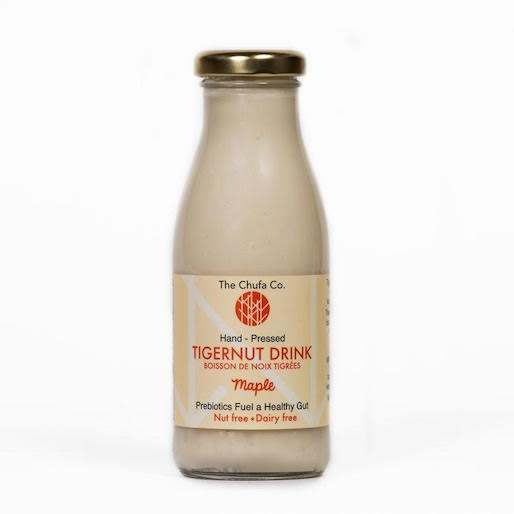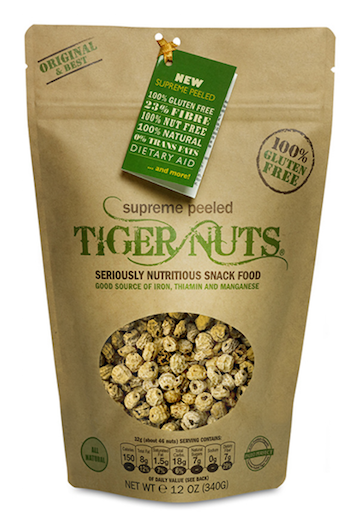Feeding the Masses: Drinking Chufa Supplies Prebiotics for Your Probiotics

The evidence keeps rolling in: diet impacts gut health, and gut health determines the health of the rest of the body. From diabetes to Alzheimer’s, science is looking to the gut for prevention and cures.
According to an article on the National Center of Biotechnology Information’s website—and keep in mind, I’m simplifying—our guts house billions of good (and some bad) bacteria—that’s what’s known as the microbiota. We need to feed the microbiota, and just like any houseguest, they have foods they like best, foods that make them well or make them sick. And like a good houseguest, if we feed them well, they’re more likely to help out around the place.
What microbiota like to eat are prebiotics. Not to be confused with probiotics, which are the actual microbes found in live foods such as yogurt, kombucha or kim chi. We should eat both pro- and prebiotics in abundance to keep our microbiota well-fed, happy and healthy, with the good bacteria outnumbering the bad.
Prebiotics are indigestible (by us) plant fibers, and to make matters more confusing, prebiotics go by a few different names: inulin, resistant starch and more broadly, insoluble fiber. When we ingest it, it sits undigested in the large intestine like a veritable buffet, where our microbiota gobble it up as fast as they can, but it also ferments a little. Which brings us to the inevitable gas problem. Prebiotics give us humans what can only be described as superhuman flatulence…something akin to jet propulsion … ranging in severity from mildly amusing to downright disconcerting. But don’t let that stop you from getting your daily dose of prebiotics.
We’re on the right path with regard to probiotics—we love our fermented and cultured food—but not so much the prebiotics. And it’s not that we’re lazy; prebiotics aren’t nearly as prevalent in the modern Western diet as they ought to be. Eating enough of it takes a bit of effort and the food can be bulky, think raw Jerusalem artichokes, carrots, garlic and onions, okra, radishes, jicama, turmeric, asparagus and now, add to this list tiger nuts.
Not a nut at all, this African tuber—the root of the Cyperus esculentus, a type of sedge—is loaded with prebiotic fiber. Also known as chufa, nut grass or earth almond, it’s small, crunchy, nutty and delicious. It’s enjoyed throughout much of the world, where it grows both wild and cultivated. In the Valencia region of Spain, it’s prized as the main ingredient in a tasty, rich, slightly sweet traditional drink called horchata de chufa. Which is where Andrea Orazi and Scott Abraham of The Chufa Co. first tasted it.
 Photo courtesy of The Chufa Co.
Photo courtesy of The Chufa Co.